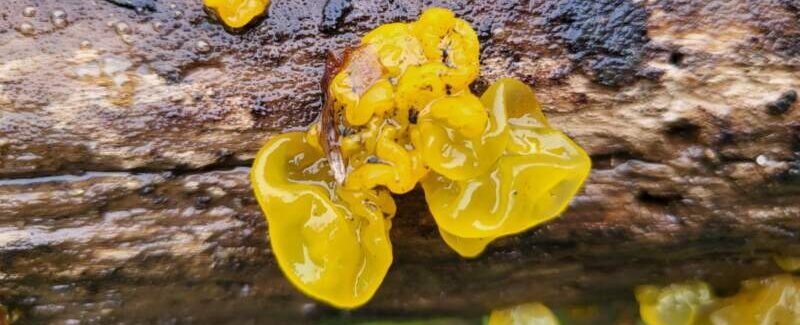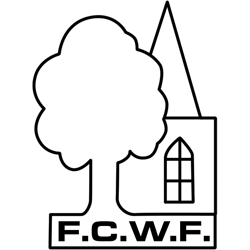The Carriageway and The Grounds of Childwall Hall
30 minutes approximately.
Of the many walks around Childwall Woods and Fields, the walk that begins with the carriageway is the most magical. The carriageway dates back to the late 1700s when this was the main entrance to the grand Childwall Hall known in its heyday as Childwall Abbey due to its monastic look. For more information visit the History Page.
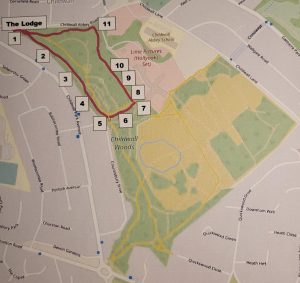
You will need: A camera and strong shoes. This is a wheelchair/buggy friendly walk all the way.
1. The entrance to the woods
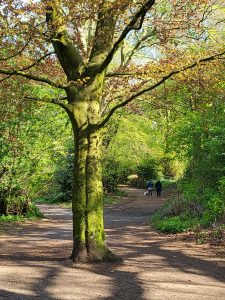
The Commemorative Tree. A purple leafed beech
Enter the woods by the main gates next to the Lodge on Childwall Abbey Road and walk forward to where the path forks. If you look to your right you will be able to see the carriageway stretching ahead.
2. The Entrance to the Carriageway
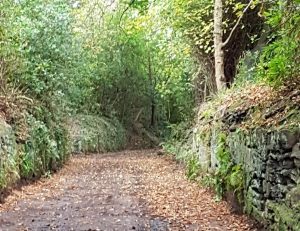
As you walk through the carriageway you will see many signs that this was once an important route through the grounds and up to the door of Childwall Hall.
At the start the walls are low and the trees have pushed their way over the top making this a leafy summer walk.
The floor is solid Bunter Sandstone, covered with layers of porous stone to help with drainage, laid many years ago. Recently, decades of leaf litter has been removed to make this a good route into the heart of the woods and you won’t need your wellies.
3. Features of interest
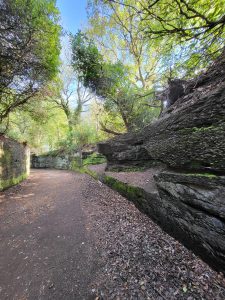
Outcrops of rocks form shelves and overhangs, while twisted tree roots form intricate patterns (below).
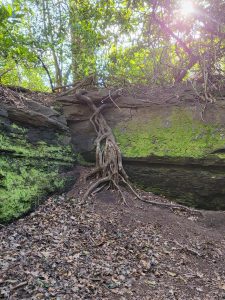
4. Features of Importance
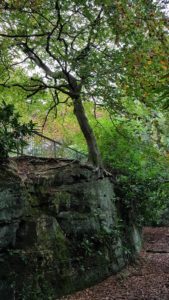
The steep sides of the carriageway expose the Bunter Sandstone formed millions of years ago.
This is recognised as a Regionally Important Geological Site (RIGS) and forms a dramatic high wall on both sides.
5. The Bridge
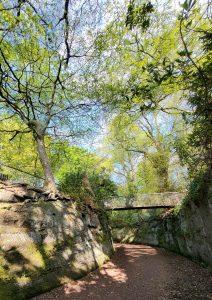
The bridge is known to everybody who walks the woods but not many walkers get to see it from this angle.
Today there is a metal bridge but would that have been the case hundreds of years ago?
6. Ancient Brickwork
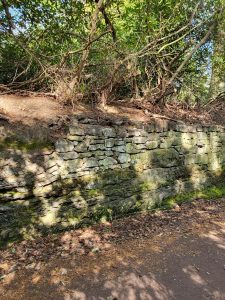
Although the carriageway was cut through Sandstone there are sections of well-constructed brickwork illustrating the importance of this route.
Constructed by craftsmen these walls have held back the ground for hundreds of years and are still a beautiful sight to see.
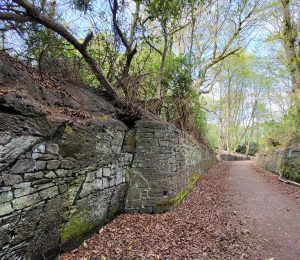
Is this a passing place built into the wall of the carriageway?
Beautifully constructed as you would expect in a feature of such importance, this being the first thing to be seen when approaching Childwall Hall in a carriage.
7. Sweet Chestnut Trees
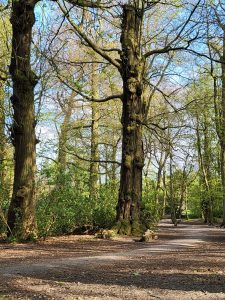
At the end of the carriageway look to your right. Don’t miss the wonderful old Sweet Chestnut trees a little further down the path.
A group of 3, planted hundreds of years ago but now valuable ecosystems for the many creatures living in them and on them.
8. The Walk-through
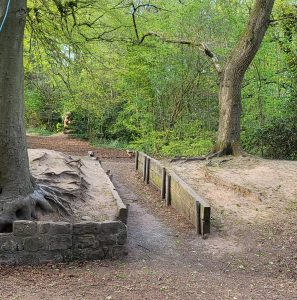
Now you have reached the end of the carriageway turn left through the walk-through, boarded each side, and join the path.
9 The Veteran Trees Near the Hall.
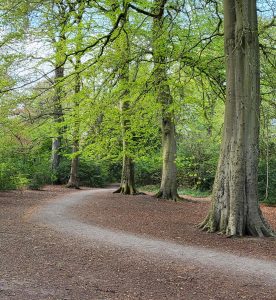
Ahead you will see a row of huge beech trees, hundreds of years old from their size. Follow the path past the trees.
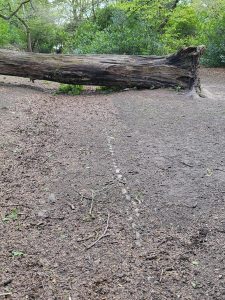
You will undoubtedly notice the large fallen tree on your left, which fell many years ago and has given us wonderful shows of different fungi through the years.
Notice also the line of pebbles carefully placed in the ground a lifetime ago. Part of the pebble path down the hill back to Childwall Hall.
10. The path by the old site of the Chapel.
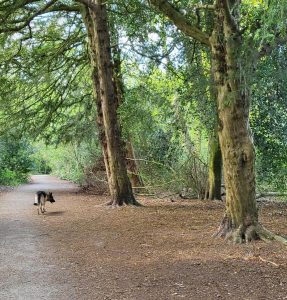
As you walk along the path you will notice that you leave behind the beech trees and large Yew trees border the path on your right. These are reminders of a time when the Chapel could be found just down the slope on the other side of them. There are still remains today if you venture down to your right, towards Lime Pictures. See the History Page
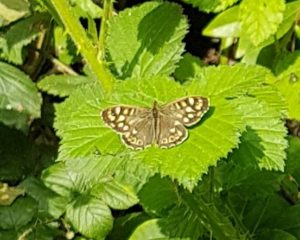
On your left, just past the yew trees are old Rhododendrons and patches of tall bramble.
These are a favourite spot for Speckled Wood Butterflies on a sunny day in late spring and summer.
11. The Northern Perimeter Path
Follow the path as it turns and runs parallel to Childwall Abbey Road.
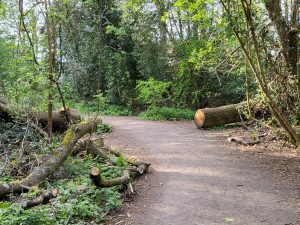
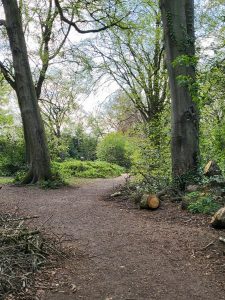
You will notice the remains of the two oaks brought down across the path by storm Awen in November 2021. Most of the good wood was carried away for firewood but the heavier branches and the trunk were left to the mercy of the fungi.
Carry on along this path, past the small side gate, back to the main entrance by the Lodge House.
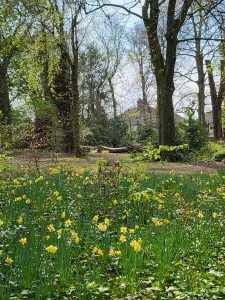
In April the sea of Daffodils will catch your eye and in late summer you may find beechnuts falling around you as you walk.
The woods change with the seasons and there is always something to lift your spirits and make you smile.
This walk will take roughly 30 minutes depending on your speed but you will not want to rush it, there’s far too much to see.
B Cameron
Photographs are the author’s own.
